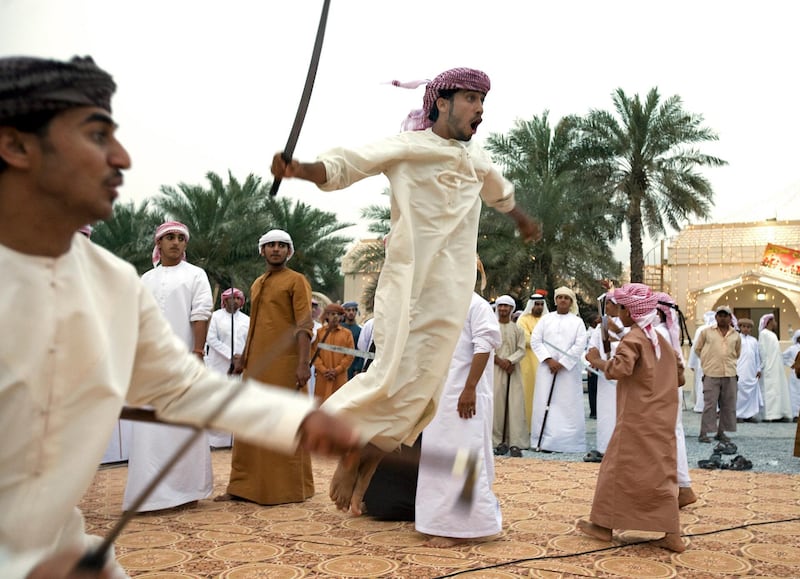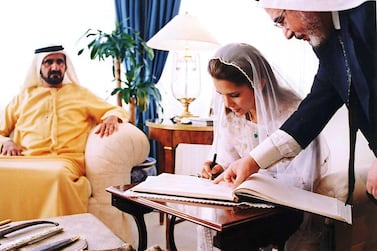Sheikh Hamdan bin Mohammed, Crown Prince of Dubai, and his brothers have taken the first steps to getting married by signing the required legal documents. Now the fun begins.
While every wedding party is different, and wedding culture in the Emirates is ever changing, there are common practices they may follow when planning their royal weddings.
Islamic marriages officially begin when the wedding contract is signed by the groom and the bride’s father in the presence of at least two male witnesses.
The families would have already spent months getting to know each other and their prospective in-laws.
The signing can be a simple ceremony between male relatives or be celebrated with a joyous party.
Once the contract is signed, the bride and groom can begin courtship, if they haven’t done so already.
We don't yet know when the reception to celebrate and finalise the weddings of Sheikh Hamdan, Sheikh Maktoum bin Mohammed, Deputy Ruler of Dubai, and Sheikh Ahmed bin Mohammed, chairman of the Mohammed bin Rashid Al Maktoum Knowledge Foundation, will be. Usually, by the time the wedding reception is held, which is often months later, the couple know each other well and are ready to take the final step in starting their life together.
Men and women have separate wedding receptions, which can be held on different nights. Newly-weds can live together once the bride’s wedding reception has been held with female guests.
Guests typically number in the hundreds and for this reason brothers, cousins and male friends often marry on the same day. Each bride, however, is usually the star of her own night.
Women's receptions begin in the late evening. Guests are received at the door by female relatives of the bride and groom and are offered various perfumes before seating themselves at the table of their choice.
Tables may be laden with salads, appetisers and cakes. A multi-course meal is served throughout the evening and servers circulate with coffee, tea and snacks, like fried luqimat, a sweet dumpling.
There may be dancing, there may not. Some weddings will have a female singer perform for female guests. DJs play anything from Khaleeji ballads to reggaeton.
After a few hours, the bride enters and walks down a long catwalk in the centre of the hall to a stage where she seats herself on an elaborate sofa. She can stay there to receive guests or circulate among them.
A change in music alerts female guests to the impending arrival of the groom – the evening culminates with his entrance. He also walks down the elevated aisle, dressed in a gold-trimmed bisht cloak, with a handful of other male relatives and under the gaze of hundreds of women.
This is a common formula, but wedding practices change according to the fashion and family.
There are neighbourhood weddings at homes in traditional coastal, mountain and desert communities. Most popular are receptions in custom-built wedding halls, while in larger cities newly-weds opt for hotel ballrooms.
Mountain weddings in wadi basins remain popular in the Northern Emirates. At these winter events, thousands gather from early morning to drum, dance and feast. Men arrive with family groups shrieking the nadbah war cry to announce their arrival. Women make a more discrete entrance, joining other female relatives in a house beside the tents set up for the men.







